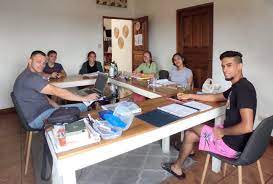
Adopting a new language often feels daunting, but a Spanish immersion experience in Costa Rica provides a practical, statistics-supported path to real fluency. More learners than ever are opting for immersive, experiential education methods in vibrant locations. Costa Rica stands out as a leading destination thanks to its safe environment, hospitable locals, and stunning natural beauty. But is language immersion truly worth the investment? This blog uncovers the trending benefits of Spanish Immersion in Costa Rica, supported by current data and learner feedback.
The Power of Immersive Language Learning
Traditional classroom-based language learning, while beneficial, often leaves gaps in listening and conversational abilities. Immersive programs offer hands-on practice that textbooks simply can’t deliver. According to recent statistics, students in full immersion environments acquire language skills up to 30 percent faster than those in traditional courses. Costa Rica’s immersive approach allows learners to immediately apply language skills in real-life contexts, from ordering food at a local market to chatting with neighbors or exploring eco-tourist attractions.
Improved Retention and Fluency Rates
Research consistently highlights the impact of “learning by doing” on retention. According to a survey by linguistic researchers, 80 percent of students participating in immersion programs demonstrate advanced conversational proficiency within six months. By contrast, fewer than 35 percent of students in non-immersive programs reach the same level in a comparable timeframe. These statistics show that active participation in daily life dramatically strengthens speaking, comprehension, and listening skills.
Constant Exposure Converts Input Into Output
One of the core advantages of Spanish immersion in Costa Rica is consistent, meaningful exposure to the language. Learners encounter Spanish in every facet of daily life, from signs at the bus stop to casual street conversations. Data from language acquisition studies indicates that daily exposure to a new language accelerates cognitive adaptation and increases neural connectivity. With language input happening around the clock, learners shift from passive listeners to active communicators much more quickly.
Cultural Context Deepens Understanding
Mastering a language concerns more than grammar and vocabulary; it involves understanding cultural cues, humor, formal versus informal speech, and local colloquialisms. Costa Rica offers a unique blend of Spanish with its own regional flavor. According to recent polling, 72 percent of language learners state that living amidst native speakers enhances their cultural literacy and overall communication confidence. Shared meals, homestays, and community involvement provide daily opportunities to decode gestures, idioms, and traditions integral to fluency.
Immediate Application Boosts Motivation and Confidence
Immersion means learners regularly encounter situations where they must rely on Spanish for genuine communication. Whether navigating the city, joining a yoga class, or volunteering, every scenario requires putting new skills to use. This immediate application results in higher motivation; studies show that learners who engage in immersive activities report a 50 percent greater increase in language confidence within the first three months compared to those in traditional settings.
Listening Skills That Go Beyond the Classroom
Real-world immersion sharpens listening skills far beyond what audio recordings or software can offer. Background noise, differing accents, and natural speech rhythms close the gap between classroom exercises and everyday conversations. According to education analysis, learners exposed to authentic audio environments develop the capacity to interpret fast-paced or informal Spanish more efficiently, achieving functional listening ability up to twice as fast as non-immersive learners.
